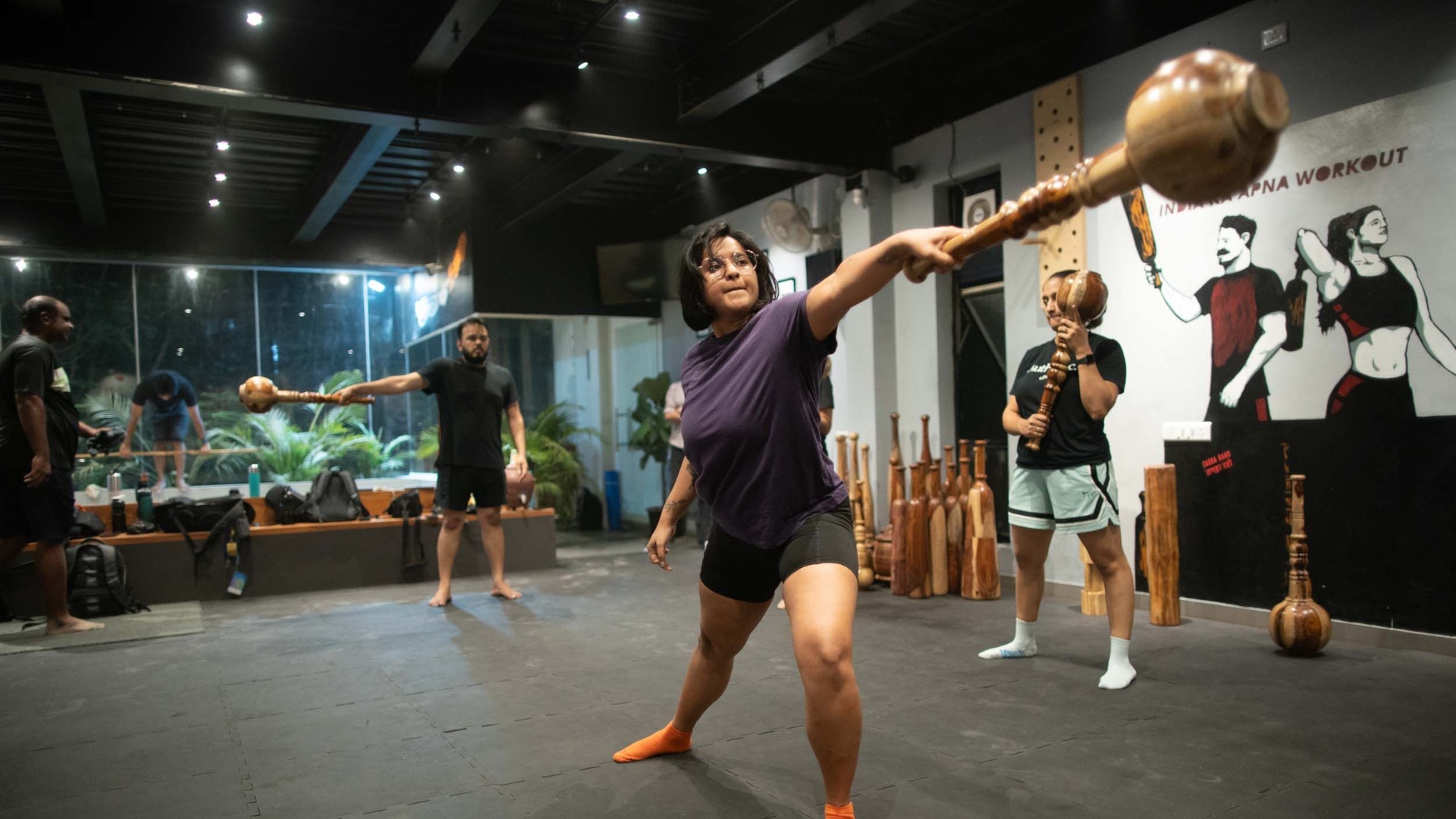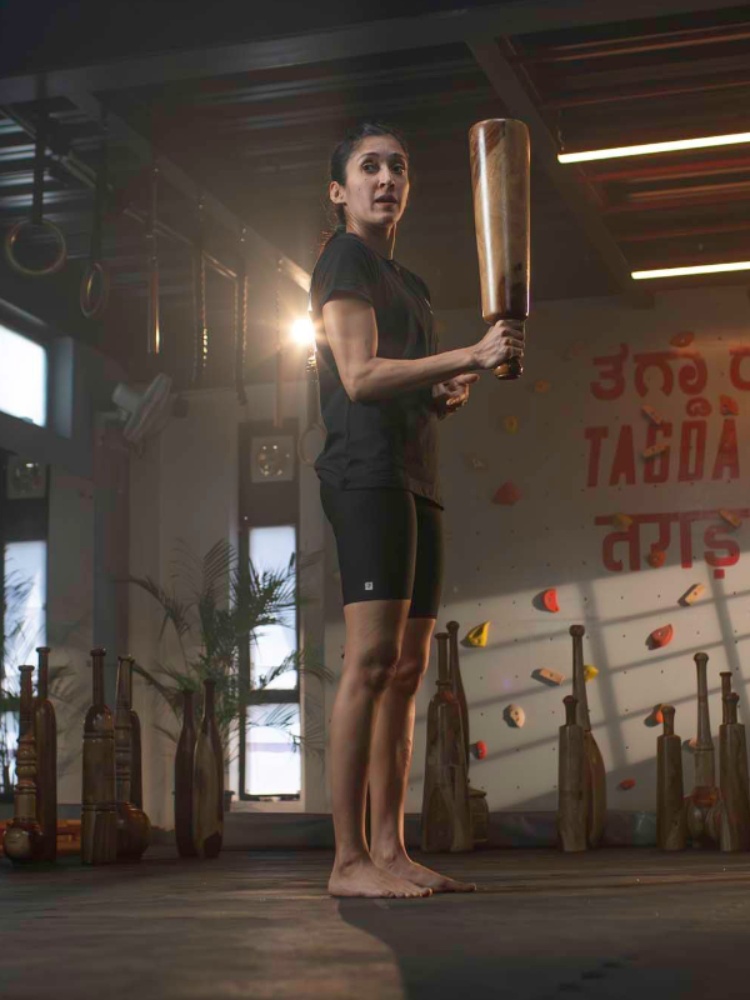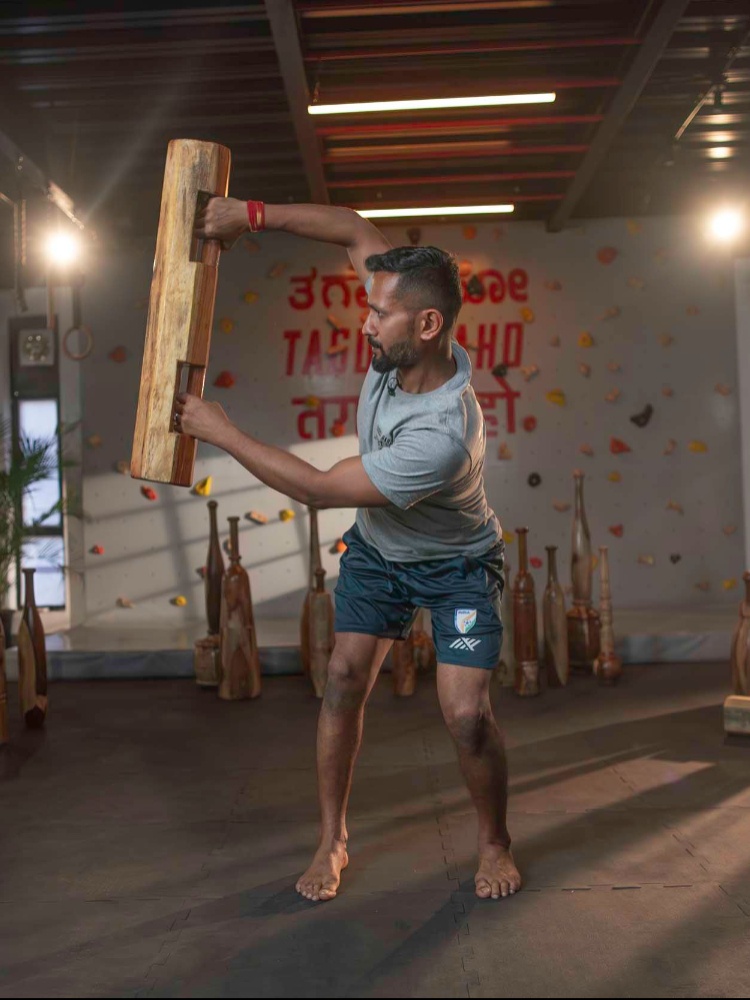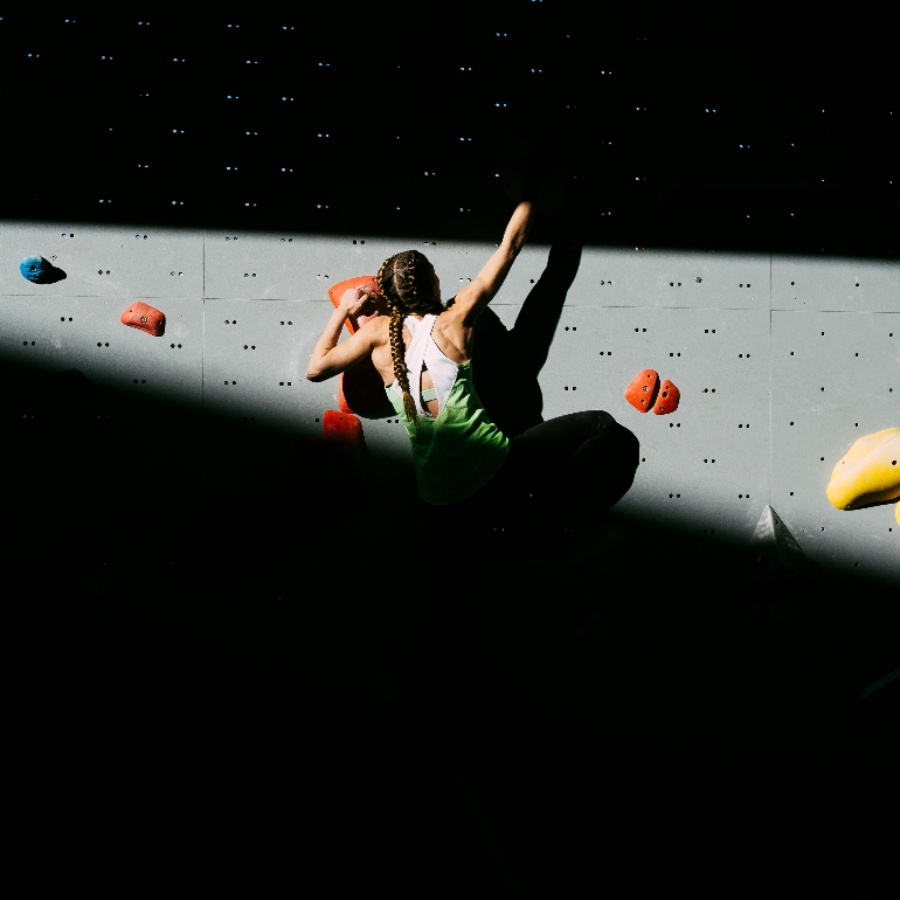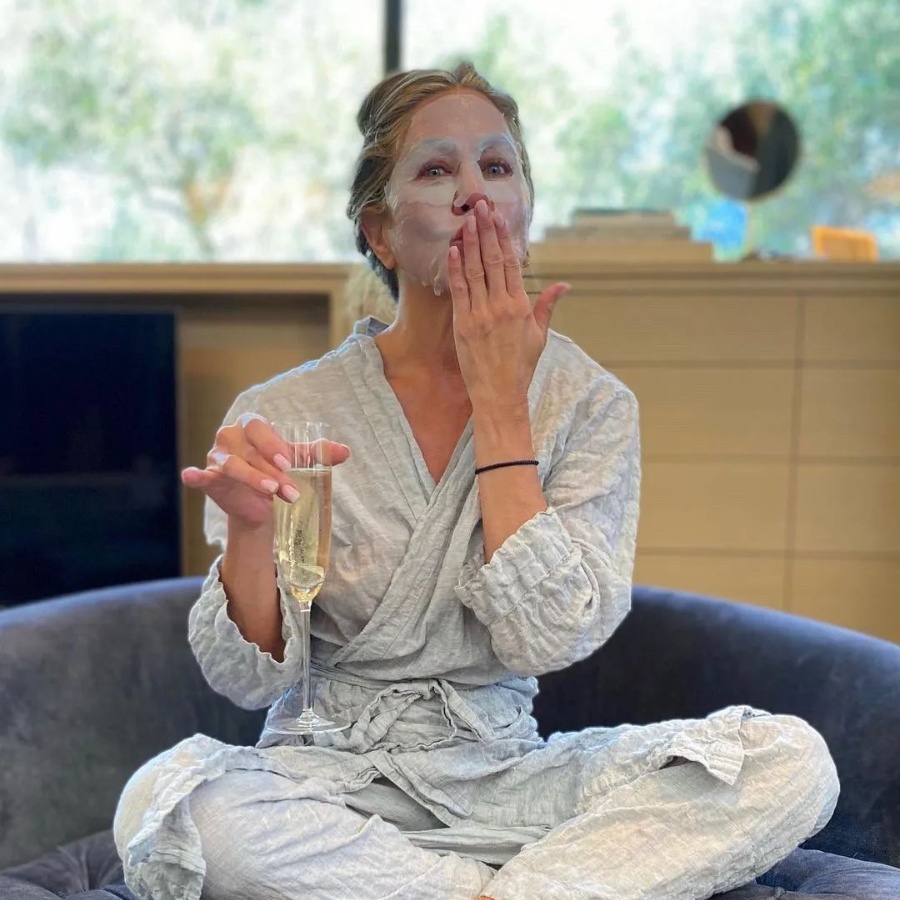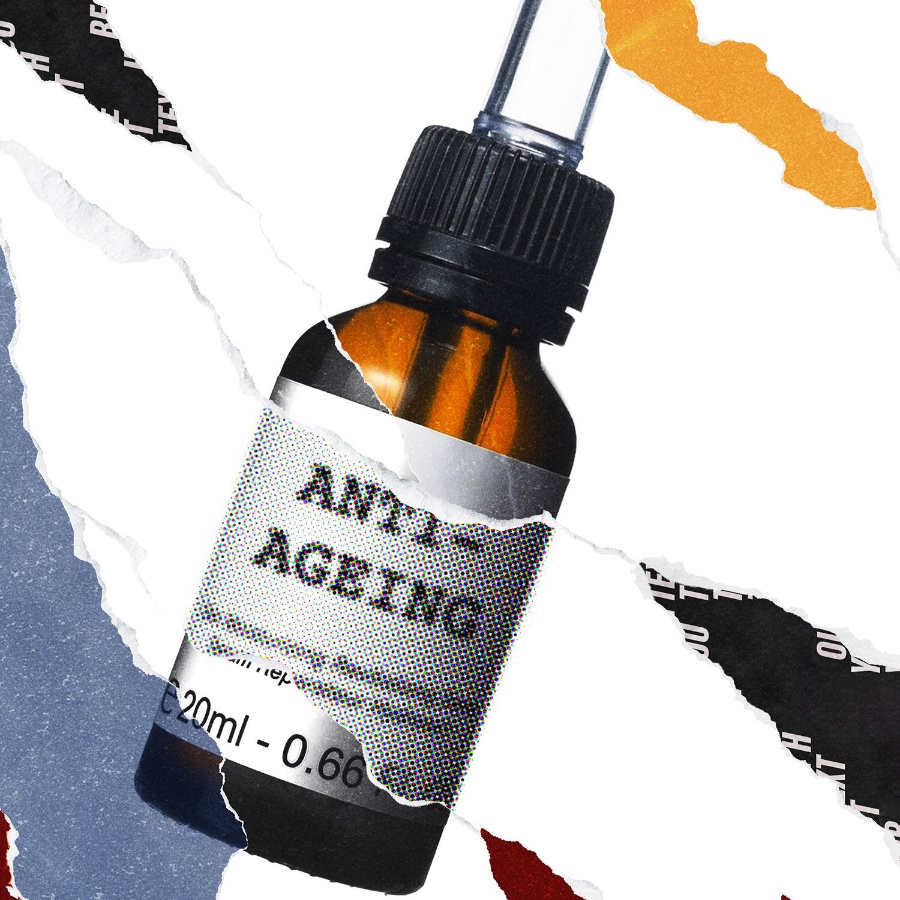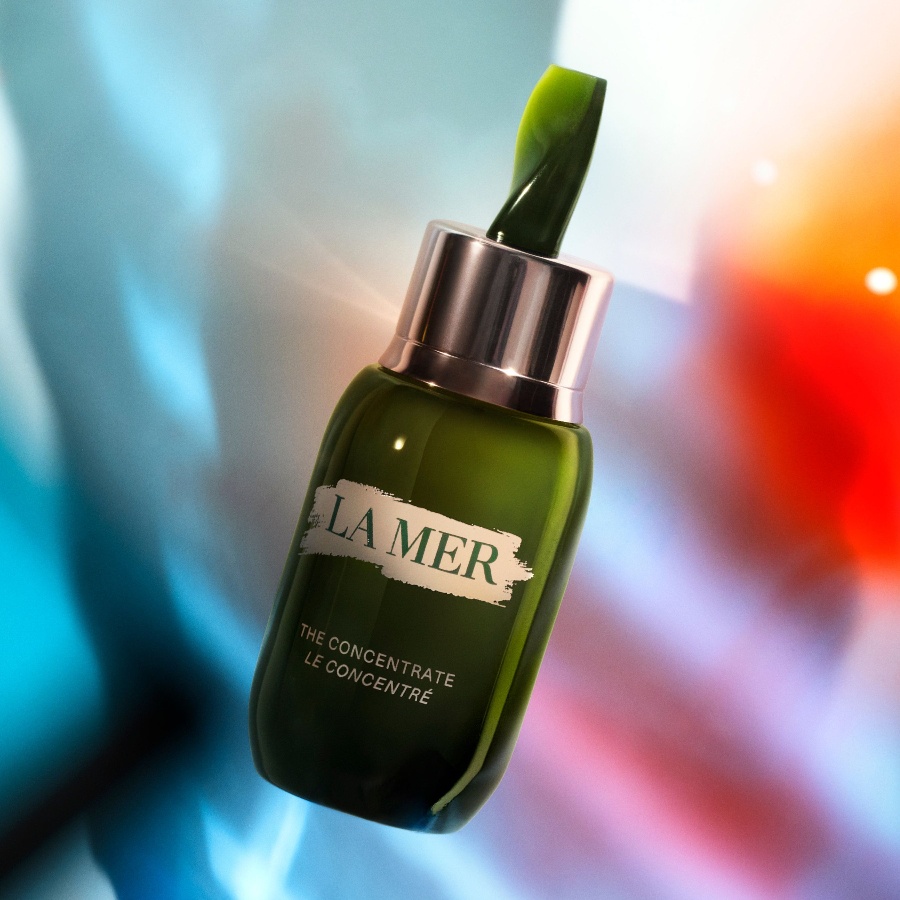Recently, Shriya Didwania made a rather unusual change to her home office. Along with her dependable water jug and well-stocked tray of vegan snacks, the Mumbai-based talent acquisition professional now keeps a cylindrical piece of wood that looks like it would be more appropriate in a rage room. The mudgar, as it’s called, is likely to bring to mind the pre-cable TV era when families gathered on Sundays to watch shows based on mythological epics. But the ancient Indian club, which has so far been an akhada staple, is now becoming a fixture in modern Indian homes and gyms. Stationed near Didwania’s workstation, it’s something she picks up and swings around whenever she needs to take a break from sitting hunched at her desk.
Didwania is far from alone in her newfound commitment to making the mudgar her fitness contraption of choice. A cursory Google search—which probably would have autocorrected to “Did you mean mudguard?” just a couple of years ago—now throws up 15 legit pages of results for video tutorials, gym classes, and online stores dedicated to the wooden club and its burlier cousins, the gada and the samtola. On Instagram, there are Reels of some seriously ripped dude swinging two mudgars around at a time, or people claiming that mudgar workouts cured their seemingly incurable injuries. Milind Soman is a fan. It’s unclear when this ancient movement became a modern-day gym routine and what prompted its popularity, but what is evident today is that mudgar workouts are all set to become the fitness industry’s Next Big Thing. But why?
“Both the mudgar and the gada have a unique feature, wherein the entire weight is stacked on one side, giving it a very lever-like function,” explains Rishabh Malhotra, fitness professional and founder of the MS Dhoni-backed Tagda Raho, a gym chain with branches across Bengaluru and Pune that is dedicated to promoting ancient Indian fitness practices. “So, unlike a barbell or dumbbell, a mudgar essentially becomes an extension of your arm, which opens up your body to dynamic movements.”
